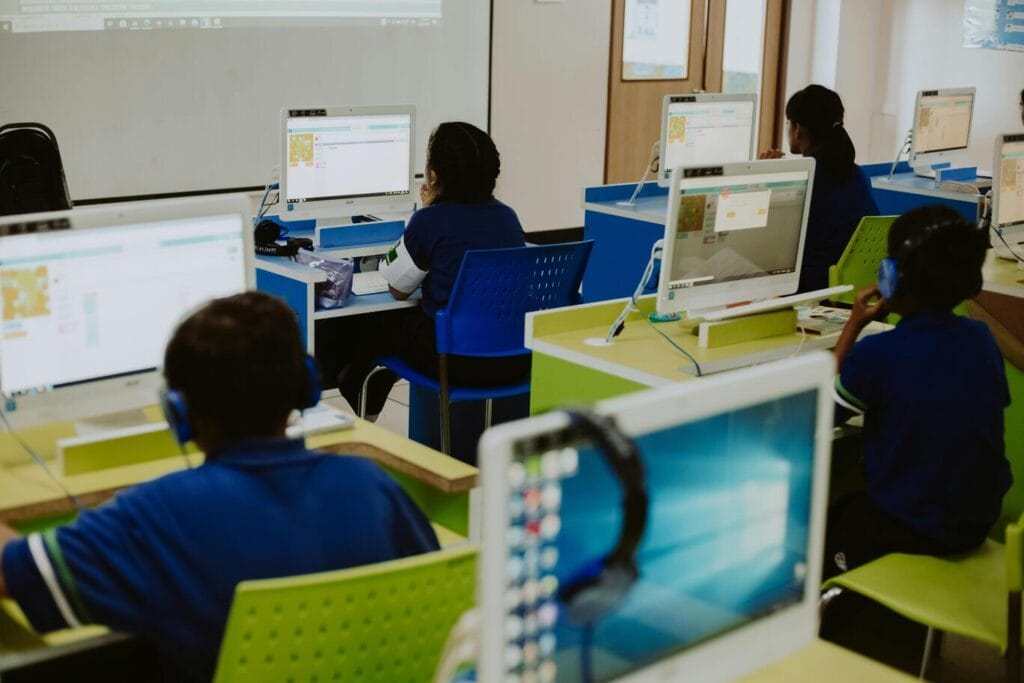Imagine a classroom where students are more engaged, not struggling to keep up with the digital pace. Picture a world where homework becomes a breeze, allowing for deeper exploration and creative expression. This isn’t science fiction, but the reality unlocked by early keyboard lessons. Here’s why giving your child a head start on the keyboard is an investment in their future, both digital and cognitive:
Building a Digital Foundation

In today’s information age, the keyboard is the key that unlocks a vast treasure trove of knowledge and opportunity. Early keyboard lessons equip children with:
Solid Typing Technique: Learning proper finger placement and touch typing from a young age sets the stage for efficient and accurate typing throughout their academic and professional lives.
Enhanced Digital Literacy: The ability to navigate the keyboard confidently fosters a sense of comfort and control in the digital world, opening doors to online learning, research, and communication.
Improved Learning Efficiency: Imagine a student who can focus on comprehending information rather than struggling to type it down. Early keyboarding skills free up valuable mental space for higher-order thinking and deeper learning.
Beyond the Screen: Cognitive Benefits Abound
The advantages of early keyboarding lessons extend far beyond the digital realm, nurturing essential cognitive skills:
Sharpened Focus and Concentration: Mastering keyboarding techniques requires focused practice. This translates into improved concentration skills that benefit all areas of learning, from mastering math problems to excelling in critical reading.
Fine Motor Skills on Fast Track: Coordinating little fingers on the keyboard strengthens fine motor skills and hand-eye coordination – valuable tools for activities like writing, drawing, and even playing musical instruments.
Cognitive Boost: Studies suggest that early keyboarding lessons can stimulate neural pathways, potentially enhancing memory, spatial reasoning, and overall cognitive function.
Master Typing & Digital Skills with Typesy!
Go beyond keyboarding—Typesy helps you boost digital literacy, productivity, and efficiency in today’s tech-driven world.
Making the Most of Early Keyboard Lessons
Age-Appropriate Engagement: Look for programs that cater to your child’s age and learning style, utilizing interactive games, activities, and exercises to keep them motivated and engaged.
Building Blocks Before Speed: Focus on proper posture, finger placement, and foundational typing techniques before progressing to speed drills. A strong foundation is essential for sustained progress and avoiding bad habits.
Consistency is Key: Short, frequent practice sessions are far more effective than infrequent marathons. Encourage daily practice, even if it’s just for 10-15 minutes, to build muscle memory and solidify learned skills.

By introducing your child to the world of keyboarding early, you’re giving them a gift that keeps on giving. They’ll not only navigate the digital landscape with confidence but also develop valuable cognitive skills that benefit them throughout their lives. It’s a small investment with a big payoff, empowering your child to become a successful learner and a thriving member of our digital world.

Frequently Asked Questions
Why are early keyboard lessons important?
Early keyboard lessons equip children with a valuable skillset for the digital age. They learn proper typing techniques, boost digital literacy, and improve learning efficiency. Beyond the screen, these lessons can enhance focus, strengthen fine motor skills, and potentially even offer cognitive benefits.
What are the benefits of early keyboard lessons?
Here’s a breakdown of the key advantages:
Digital Skills: Solid typing technique, enhanced digital literacy, and improved learning efficiency.
Cognitive Boost: Potentially improves focus, concentration, fine motor skills, spatial reasoning, and memory.
Confidence and Self-Esteem: Mastering a new skill like keyboarding builds confidence and a sense of accomplishment.
What age is best to start keyboard lessons?
There’s no single “best” age. However, many programs are designed for children as young as kindergarten or first grade. Look for age-appropriate programs that cater to your child’s development and learning style.
How do I choose the right keyboard lesson program?
Consider these factors:
Age-appropriateness: The program should be designed for your child’s age and skill level.
Engagement: Look for programs that use interactive elements like games, activities, and exercises to keep your child motivated.
Focus on Technique: Ensure the program emphasizes proper posture, finger placement, and foundational typing techniques before progressing to speed drills.
How much practice is necessary?
Consistency is key! Short, frequent practice sessions (10-15 minutes) are more effective than infrequent long ones. Encourage daily practice to build muscle memory and solidify learned skills.
Are there any downsides to starting keyboard lessons early?
Not necessarily. However, it’s important to choose age-appropriate programs and avoid putting excessive pressure on young children. Focus on making learning fun and engaging.
By giving your child a head start with keyboard lessons, you’re equipping them with the tools they need to thrive in both the digital and cognitive worlds. So, why wait? Let the typing adventure begin!
Not on Typesy Yet? You're Missing Out!
Master typing, boost productivity, and enhance digital literacy with Typesy—the leading platform for adaptive and engaging typing education. Whether you're an individual learner, a homeschool educator, or managing a classroom, Typesy has the perfect solution for you!
Choose Your Ideal Experience:




